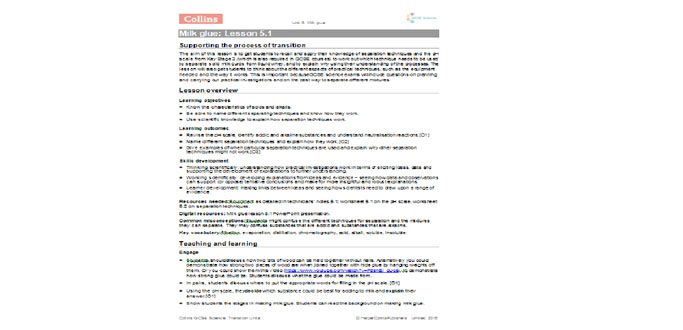Intended for learners transitioning from KS3 to the new GCSE science specifications (the first exams for which are due in summer 2018).
Contents: – 1x introduction for teachers – 3x lesson plans – 2x worksheets – 3x practical sheets – 4x PowerPoint presentations – 3x technician notes
Objectives: Students learn about making glue from the casein protein found in milk, by examining the process of separating milk curds and whey, how to calculate and improve yields and how the presence of fat can affect the resulting glue’s strength.
Lesson 1 Students apply their knowledge of separation techniques and the pH scale from to separate solid milk curds from liquid whey and explain their understanding of the processes involved. Students will be required to think about the different aspects of practical techniques, such as the equipment needed and the way it works – important, since GCSE science exams will include questions on planning and carrying out practical investigations, and the best ways of separating different mixtures.
Lesson 2 Students use their skills at following instructions to carry out a practical exercise safely and effectively. The practical work is then taken further by challenging students to think about why they can never get as much product as theory predicts and getting them to calculate yield. Students are then asked to plan their own investigation, using the practical they have done as a template.
Lesson 3 Students complete the analysis and evaluation of their investigation, while practising graph drawing and interpretation skills learnt during KS3. They then analyse the data and evaluate their practical work using a framework employed in GCSE science work.










